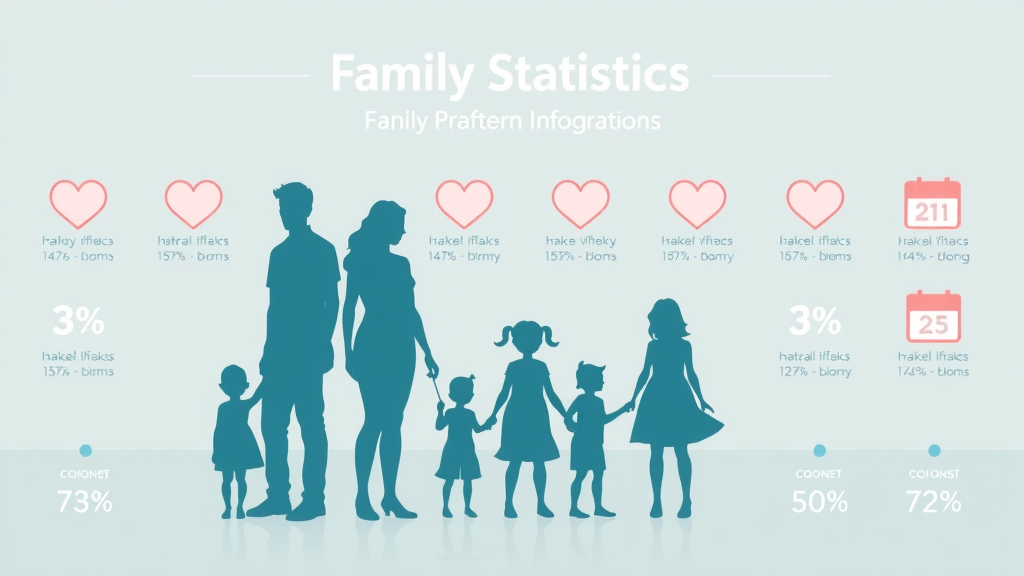Opening Hook: The Impact of Positive Parenting Techniques Backed by Data
Did you know that children raised with positive parenting techniques are 30% less likely to develop behavioral problems compared to those raised with traditional discipline methods? Groundbreaking studies from leading child development experts confirm what many parents are now discovering firsthand—focusing on connection, empathy, and proactive discipline doesn’t just reduce tantrums and power struggles, but fosters resilient, curious, and confident kids. In a world where parents often feel overwhelmed by conflicting advice, understanding the practical and research-proven benefits of positive parenting can transform not only your child’s behavior but your entire family dynamic.

A Surprising Truth: How Positive Parenting Techniques Transform Families
Families everywhere are discovering that positive parenting techniques aren’t just a new trend—they’re a transformative approach that reshapes how children behave, learn, and relate. Rooted in positive psychology and research-backed methods, these techniques aim to empower kids while fostering good behavior, emotional intelligence, and a strong parent-child bond. Unlike older methods that focus on punishment or control, positive parenting meets children’s needs for security, guidance, and autonomy, helping families find joy and stability—even during challenging moments. If you’ve struggled with behavior problems, or if you’re raising kids across ages, this guide will show you how the positive parenting approach brings out the best in everyone.
Whether you’re the parent of young children or navigating the dynamics with older children, understanding and adopting positive parenting techniques can change everything. This article unpacks the science, strategies, real-life stories, and practical tips you need to become a more positive parent—one who inspires, guides, and creates a foundation for lifelong good behavior and child development.
What You'll Learn About Positive Parenting Techniques
Clear definition of positive parenting techniques and why they work
Breakdown of effective positive discipline strategies
Step-by-step guidance for incorporating positive psychology into daily life
Real-life examples, expert quotes, and actionable tips for every parent
Answers to common questions about positive parenting style and child development

Understanding Positive Parenting Techniques—The Evidence and Foundations
Defining Positive Parenting Techniques and Their Importance
At its core, positive parenting techniques are centered around building a nurturing relationship that encourages good behavior while respecting a child’s individuality. Rather than punishing mistakes, positive parenting embraces positive reinforcement, logical consequences, and open communication to guide children’s actions. This ideology is grounded in the understanding that children learn best from supportive environments where they feel valued, heard, and safe. By embodying the role of a reliable and empathetic role model, parents help children learn to manage emotions, solve problems, and make wise choices—a key function that supports healthy child development.
The magic of this approach lies in its long-term impacts. Consistently applying positive parenting principles leads to secure attachment, better mental health, and social competence. Whether interacting with young children, older children, or teens, using these methods ensures that your children grow up feeling both respected and guided, laying the groundwork for lifelong positive outcomes.
The Science of Child Development and Positive Psychology
Recent advances in child development and positive psychology strongly support positive parenting. Studies confirm that children exposed to positive discipline and reinforcement exhibit higher self-esteem, improved academic performance, and fewer behavioral issues. Positive psychology shifts focus from correcting errors to nurturing strengths and emotional security—allowing children to thrive.
As children grow, their brains are wired to seek connection and approval from caregivers. Positive parenting harnesses these natural tendencies, using empathy and proactive strategies to support emotional growth. Efforts to foster good behavior and emotional regulation early create an environment where children learn values like empathy, patience, and respect—critical skills for navigating challenges as they mature.

How Positive Parent Approaches Compare to Traditional Discipline
Traditional discipline methods often rely on punishment, fear, or negative consequences to modify behavior. In contrast, the positive parenting approach emphasizes identifying the cause of misbehavior, teaching new skills, and reinforcing desired behaviors through explanation and modeling. The difference is striking: where punishment can create shame or resentment, positive parenting nurtures trust and a willingness to cooperate.
For instance, instead of time-outs or scolding, a positive parent might use a natural consequence (such as cleaning up a spilled drink) or work through problem-solving together. This teaches responsibility and develops autonomy, resulting in fewer power struggles and more consistent good behavior. Research repeatedly finds that children learn more from understanding and encouragement than from fear or arbitrary rules.
The Core Principles of Positive Parenting Techniques
Five Principles of Positive Parenting Techniques
Positive parenting techniques can be distilled into five fundamental principles that serve as the foundation for raising confident, well-adjusted kids:
Provide a Safe and Engaging Environment: Create spaces that encourage exploration and learning without fear of harm or shame, so children feel secure to try new things.
Positive Learning Environment: Offer opportunities for children to learn from experiences, including mistakes, in an environment where feedback is encouraging rather than punitive.
Assertive Discipline: Guide behavior with clear, consistent boundaries while respecting a child’s point of view. Use positive discipline that teaches, not punishes.
Realistic Expectations: Set achievable, age-appropriate goals for your children, making sure they are aligned with the child’s development stage.
Take Care of Yourself as a Parent: Acknowledge your needs and model healthy self-care, showing your children that well-being matters for everyone in the family.

Positive Discipline: Encouraging Good Behavior and Emotional Growth
At the heart of positive parenting techniques lies positive discipline, a framework that replaces punitive measures with methods that encourage self-regulation and emotional intelligence. Positive discipline acknowledges a child’s feelings while maintaining firm boundaries. For example, rather than punishing a tantrum, a positive parent may acknowledge the frustration, label the emotion, and guide the child to find calm—helping children learn to manage stress in future encounters.
Key strategies in positive discipline include offering choices, setting natural consequences, and focusing on solutions instead of blame. This not only curbs misbehavior but also builds problem-solving skills and confidence. By teaching accountability and empathy, positive discipline supports strong family bonds and long-term mental health for both children and parents.
Positive Reinforcement—The Building Block for Child Learn Experiences
Positive reinforcement is a cornerstone of positive parenting techniques and helps children internalize good behavior. This means acknowledging, praising, or rewarding desirable actions rather than focusing on errors. When you catch your child cooperating, solving problems, or showing effort, deliberate positive feedback (like, “I noticed how patiently you waited your turn”) boosts self-esteem and motivates them to repeat those actions.
Over time, children learn to make better choices—not out of fear, but because they feel proud and competent. Effective use of positive reinforcement requires consistency and specificity; the more parents highlight effort and strategies (instead of only outcomes), the more children develop resilience and a growth mindset. Children learn that their actions have positive outcomes, building a solid foundation for lifelong learning and social success.

Positive Parenting Styles: Choosing the Right Approach for Your Family
Parenting Style Explained: From Authoritative to Permissive
Understanding your parenting style is essential for adopting effective positive parenting techniques. The four main parenting styles—authoritative, authoritarian, permissive, and uninvolved—all differ in their approach to rules, discipline, and communication. Authoritative parents, who balance warmth with clear expectations, consistently show the best outcomes in child development. They use positive discipline and explain rules, encouraging independence within safe limits.
In contrast, authoritarian parents rely on strict rules and punishment, while permissive parents are lenient and avoid setting boundaries. Uninvolved parents remain distant or neglectful, missing opportunities to guide or support. The positive parenting approach most closely aligns with authoritative parenting, integrating warmth, consistency, and positive reinforcement. By understanding and adjusting your own parenting style, you lay the groundwork for a more harmonious, supportive home.

Why Positive Parenting Works: Good Behavior and Lasting Results
Years of research underscore why positive parenting techniques work across ages. By replacing fear-based discipline with encouragement and explanation, children develop a deeper understanding of expectations and consequences. This approach leads to better self-control, fewer behavior problems, and improved relationships both at home and in social settings. Involving children in decisions and explaining the ‘why’ behind rules helps young children and older children develop internal motivation for good behavior.
The strategies don’t just yield short-term compliance. They set the stage for children to trust their parents, communicate openly, and self-regulate their emotions. This foundation fosters academic success and resilience as children grow, confirming the enduring benefits of a positive parenting approach for every family.
The Role of a Positive Parent as a Consistent Role Model
Being a role model is one of the most powerful—and sometimes overlooked—aspects of positive parenting. Children are great imitators; they absorb their parents’ language, emotional responses, and ways of handling conflict. A positive parent demonstrates patience, respectful communication, and calm problem-solving, setting an example for how to navigate the ups and downs of daily life.
Whether it’s apologizing for a mistake or expressing appreciation, these everyday actions reinforce key social-emotional skills. As children observe and mimic these positive behaviors, they learn to manage challenges and relationships with similar maturity. Parents who model healthy habits also teach self-care—a reminder that taking care of oneself is as important as caring for others.

How to Implement Positive Parenting Techniques Step by Step
Actionable Parenting Techniques for Everyday Scenarios
Integrating positive parenting techniques into your daily routine doesn’t require a complete parenting overhaul—small, intentional changes can make an enormous difference. Start by using positive reinforcement to encourage good behavior. Praise specific actions (like sharing, patience, or effort), and offer logical consequences when missteps occur. Effective communication is key: use age-appropriate language, listen to your child’s perspective, and involve them in setting family rules.
Other practical techniques include setting clear expectations ahead of time, offering two choices (instead of open-ended or no choice), and problem-solving together when conflicts arise. Be mindful of your tone and body language, which often communicate more than words. Above all, dedicate daily quality time to connect—no phones or distractions, just focused interaction. This builds trust and a sense of secure attachment critical for child well-being.
Using Positive Discipline at Home, School, and the Grocery Store
Positive discipline is adaptable to every environment—at home, in the classroom, and even bustling places like the grocery store. At home, prevent meltdowns by discussing plans and expectations in advance; use charts, visual reminders, or routines to clarify boundaries. In school, collaborate with teachers to reinforce learning through encouragement and empathetic correction. At the grocery store, set expectations ahead of time (“We are not buying candy today”), empower your child to help with tasks, and redirect unwanted behaviors with choices or simple distractions.
When misbehavior happens, avoid humiliation or harsh punishment. Instead, use natural consequences that relate to the situation—like helping clean up a spilled item or waiting patiently before choosing another treat. Consistency and empathy are your best tools, ensuring your parenting approach calmly guides without escalating conflict.

Fostering a Growth Mindset Through Positive Psychology and Reinforcement
A key part of child development is helping children develop a growth mindset—the belief that skills and intelligence can improve with effort and practice. Through positive psychology and reinforcement, parents teach children that mistakes are learning opportunities. Offer encouragement for effort, not perfection (“I’m proud of how hard you tried with your homework”), and discuss what can be learned when things go wrong.
This strategy builds resilience and reduces anxiety about failure. By connecting praise to process (“You kept trying even when it was tough!”), you help children learn to persist, adapt, and see challenges in a positive light. As they age, this mindset becomes a core part of their self-esteem and motivation—critical assets well into adulthood.
Real-Life Success Stories: Positive Parenting That Works
"Since adopting positive parenting techniques, our home is calmer and happier." – Parent testimonial
"Children thrive when adults model positive behavior and respect." – Child development specialist

Countless parents report that embracing these strategies leads to positive outcomes: fewer daily power struggles, more confident kids, and a stronger emotional connection at home. Experts, too, agree that shifting from punishment to encouragement fosters child develop, supporting both social skills and long-term mental health. Real-world case studies show that, when consistently applied, positive parenting helps both young children and older children manage conflict with empathy and solution-focused thinking.
Overcoming Obstacles: Common Challenges with Positive Parenting Techniques
Addressing Setbacks: When Positive Parenting Techniques Feel Difficult
No parenting technique is foolproof—there will be tough days when stress, fatigue, or persistent behavior problems make it hard to stick with positive discipline. It’s normal to feel discouraged, especially in the early stages of shifting from punitive to encouraging methods. Remind yourself that progress takes time, and setbacks are learning experiences for both parent and child.
When positive parenting feels difficult, pause to reflect on what’s working. Are you offering clear instructions? Are your expectations realistic for your child’s age? Consistency and patience are key: even if change is slow, maintaining connection and calm under stress gradually strengthens your influence as a positive parent.
Balancing Consistency and Flexibility in Positive Parenting
Consistency is a hallmark of effective discipline, but so is flexibility. Children need predictable rules and boundaries to feel secure, but every situation is different. The goal is to adjust your approach when necessary—especially as children grow and reach new developmental stages. Be open to reevaluating routines and consequences based on your child’s needs, always anchored in respect and guidance.
If things aren’t working, seek input from your child. Ask what’s challenging for them and brainstorm solutions together. Remember, your ability to adapt sets an example for your child, showing that problem-solving is a skill to use throughout life. Flexibility, balanced with structure, maximizes the impact of positive parenting.
Finding Parenting Resources and Support Communities
Building a support network can make a world of difference. From parenting resources online to local parent groups and expert workshops, there are countless options for learning, sharing struggles, and celebrating successes. Look for books, podcasts, or social media communities specializing in positive parenting techniques—and don’t hesitate to ask for professional support if you need help with more complex challenges or behavior problems.
Connecting with others reminds you that you’re not alone in the journey. The collective wisdom, encouragement, and advice from fellow parents or experts can help you weather setbacks and stay on track with your positive parenting goals.
Expert Tools and Parenting Resources for Positive Parenting Techniques
Top Books, Guides, and Parenting Resources
For parents ready to dig deeper, numerous expert-authored books and guides offer practical advice and scientific insights. Titles like “The Whole-Brain Child” by Daniel J. Siegel, “Parenting with Love and Logic” by Foster Cline and Jim Fay, and resources from the Positive Discipline Association are excellent starting points. Local libraries and online forums also provide worksheets, checklists, and support tailored to your parenting style and family’s unique needs.
Bookmark trusted parenting websites and seek recommendations from teachers or healthcare providers—they often have valuable information on child development and evidence-based parenting techniques.
Positive Parenting Techniques in Daily Routines
The real power of positive parenting is in the routine, daily moments: morning wake-ups, meals together, bedtime stories, and transitions out the door. Integrate the core principles by setting routines, using reminders, and practicing self-care. Encourage independence—like letting a child decide between two outfits or help set the table—and use positive reinforcement to motivate cooperation.
Small, consistent actions add up. Children thrive on routines and repetition, so make positive strategies part of your daily life until they become second nature for the whole family.
Comparison Table: Positive Parenting vs. Traditional Parenting Approaches |
||
Aspect |
Positive Parenting Techniques |
Traditional Parenting Approaches |
|---|---|---|
Discipline |
Positive discipline; encourages learning |
Punitive discipline; focuses on control |
Communication |
Open, respectful dialogue |
Authoritarian; parent dictates |
Motivating Behavior |
Positive reinforcement and support |
Fear of punishment or reward only |
Role of Parent |
Guide and positive role model |
Authority figure, less emotional support |
Outcomes |
Secure attachment, emotional resilience, good behavior |
Risk of resentment, less autonomy, more behavior problems |
Watch a step-by-step video demonstration with practical examples and expert narration to see positive parenting techniques in action with young children and older children alike.
This follow-up video showcases positive discipline strategies used at home, in school, and public spaces like the grocery store—demonstrating consistency, empathy, and positive outcomes.
People Also Ask: Common Questions About Positive Parenting Techniques
What is the 7 7 7 rule for parenting?
Answer: The 7 7 7 rule for parenting is a framework focusing on routines that structure time in blocks of 7 minutes for connection, 7 minutes for instruction, and 7 minutes for independence, all using positive parenting techniques. This method supports good behavior, nurtures a positive parent-child relationship, and allows children to learn effectively.
What are the 5 R's of positive parenting?
Answer: The 5 R's of positive parenting are Respect, Relationship, Routine, Role modeling, and Reinforcement. Integrating these into your parenting style ensures positive discipline, encourages child development, and promotes positive behavior through constructive systems.
What is the 70 30 rule in parenting?
Answer: The 70 30 rule in parenting suggests spending 70% of your interactions encouraging and reinforcing positive behaviors while dedicating 30% to correcting or guiding behaviors. This approach, foundational to positive parenting techniques, is grounded in positive psychology principles.
What are the five principles of positive parenting?
Answer: The five principles include safe and engaging environment, positive learning environment, assertive discipline, realistic expectations, and taking care of yourself as a parent. These core values are central to positive parenting techniques and child development success.
Essential Lists for Positive Parenting Techniques Success
-
Top 10 Positive Parenting Techniques Every Parent Should Know
Model calm and respectful behavior
Use positive reinforcement generously
Set clear, realistic expectations
Guide with consistent routines instead of strict rules
Offer limited choices to empower children
Praise effort, not just results
Use logical and natural consequences
Maintain open lines of communication
Dedicate daily quality time for connection
Care for your own well-being
-
Five Signs You’re a Positive Parent
You listen empathetically to your child’s concerns
Your discipline is assertive, not punitive
You foster independence with supportive choices
You reflect on your parenting patterns and adapt
You celebrate mistakes as learning opportunities
-
Quick Tips for Positive Discipline at Home and in Public
State expectations ahead of time to avoid conflicts
Reinforce cooperation with specific praise (“Thank you for waiting patiently”)
Stay calm and offer solutions when misbehavior occurs
Use visual charts or signals for young children
Be flexible but remain consistent with boundaries
Key Takeaways: What Makes Positive Parenting Techniques Transformative
Adopting positive parenting techniques builds deeper trust, sustained good behavior, and resilient, confident children. With actionable strategies and evidence-based tools, every family can experience a transformative journey—one where empathy, guidance, and connection lead the way.
Frequently Asked Questions: Positive Parenting Techniques
How can positive parenting techniques improve child behavior?
Positive parenting techniques replace traditional punishment with proactive strategies like positive reinforcement, clear expectations, and empathy. By focusing on understanding and teaching rather than reacting, children learn self-control and respect, resulting in fewer behavior problems and healthier emotional development—regardless of their age.
Are positive parenting techniques effective for all ages?
Yes, positive parenting techniques are effective for young children, older children, and even teenagers. The strategies adapt to different developmental needs while maintaining the core values of respect, guidance, and encouragement. As children mature, positive discipline and tailored support continue to foster independence and resilience.
What is the difference between positive discipline and punishment?
Positive discipline is about teaching and guiding, while punishment aims to control or penalize. Positive discipline uses natural consequences, empathy, and solutions to help children learn from mistakes—building understanding, trust, and long-term self-regulation. Punishment may temporarily stop unwanted behavior but often damages the parent-child relationship and doesn’t address underlying causes.
Conclusion: Start Your Positive Parenting Techniques Journey Today
Embrace positive parenting techniques: small steps lead to huge changes in your child’s behavior and your family’s happiness.
 Add Row
Add Row  Add
Add 





Write A Comment